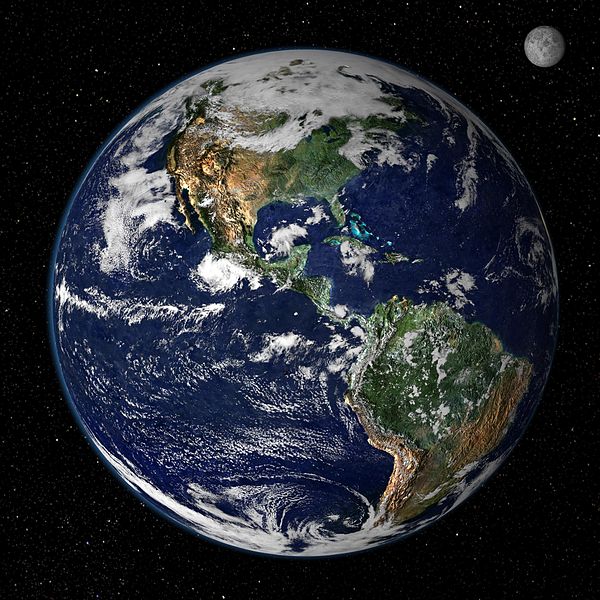
The earth may face rising temperatures even if carbon emission targets are met, according to a new study. (NASA)
Mickal Aranha
The planet may see scorching hot temperatures and dramatic increases in sea levels even if Paris Agreement carbon emission targets are met, according to a report published Monday.
World governments committed in 2015 to keeping temperature rises well below 2 C, which is believed to be a climate change tipping point. However, the latest study suggests that even if maintaining that limit was successful, the measures would be insufficient to prevent climate change disasters.
The Proceedings of the National Academy of Sciences (PNAS) study says human-induced global warming of 2 C may trigger what scientists call “Hothouse Earth” conditions.
The increase in temperature would stabilize a climate global average of 4 C to 5 C higher than pre-industrial temperatures and a sea level 10 to 60 metres higher than today.
Currently, global average temperatures are just about 1 C above pre-industrial temperatures and are rising at 0.17 C per decade, the report says.
Douglas Macdonald, senior lecturer at the University of Toronto’s School of the Environment, says this isn’t the first time scientists painted this kind of scenario.
“In some ways, it’s perhaps a little bleaker than ones that we have had talking about potential problems even if we manage to reduce greenhouse gas emissions, but scientists have been telling us that there’s a serious problem for at least 20 years now,” he said.
“Governments have started to take some steps but they aren’t taking anything like the steps that are required,” Macdonald said.
This report is significant at a time when record-setting temperatures have been experienced in Europe and forest fires are sweeping North America, he said.
“It may be that those kinds of physical events will act to bring about a change above and beyond what the science is saying but so far, it’s not clear that that’s what’s happening,” Macdonald said.
The study’s authors took into account 10 natural feedback processes with thresholds that when crossed lead to dramatic domino effects. One includes the weakening in the ability of land and oceans to absorb carbon.
In the “Hothouse Earth” scenario, carbon “sinks,” and is absorbed by the Earth’s forests and oceans, which soak up about 4.5 billion tonnes of carbon annually. But once saturated, oceans and forests would become sources of carbon, making global warming significantly worse.
The other feedback processes observed were permafrost thaw, loss of methane hydrates from the ocean floor creating more carbon, the increasing bacterial absorption of oxygen in the oceans, the deforestation of the Amazon rainforest, the reduction of northern hemisphere snow cover, the loss of Arctic summer sea ice, and the reduction of Antarctic sea ice and ice sheets.
Once tipping points in these systems have been reached, changes occur fundamentally, quickly and probably irreversibly, the report says.
One of the most dramatic potential results is that parts of the Earth would become uninhabitable. Effects of this magnitude would not be felt for another century or more but once these processes start it will be unstoppable.
The report concludes attempts to prevent these outcomes need to go beyond the reduction of greenhouse gas emissions and create effective carbon stores through agricultural and soil management, biodiversity conservation and implementation of technologies that remove carbon dioxide from the atmosphere and store it underground.
A fundamental shift in attitudes and relationship with the earth is also critical, the report states.
Phillipe Crabbé, University of Ottawa Professor Emeritus of environmental economics, said such a solution is possible but requires human intervention.
“Human stewardship at the global scale has a poor record, fisheries are an example, and requires a culture and values change at the individual and collective level,” he said. “This is difficult to achieve, especially over a couple of decades.”

